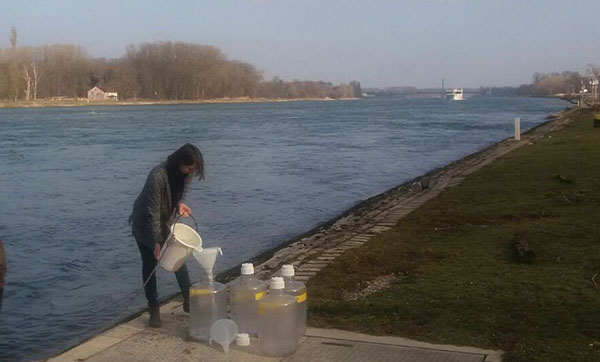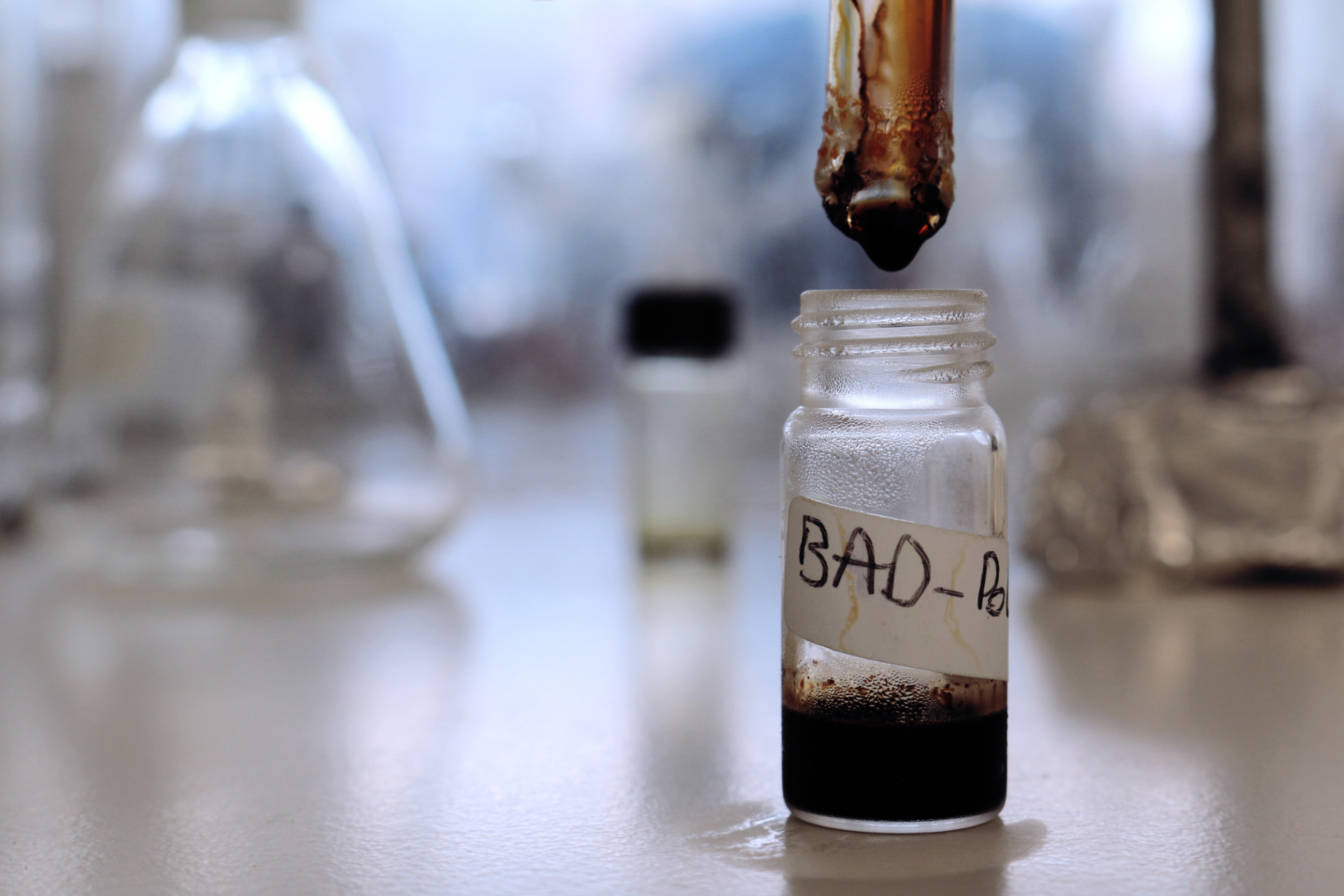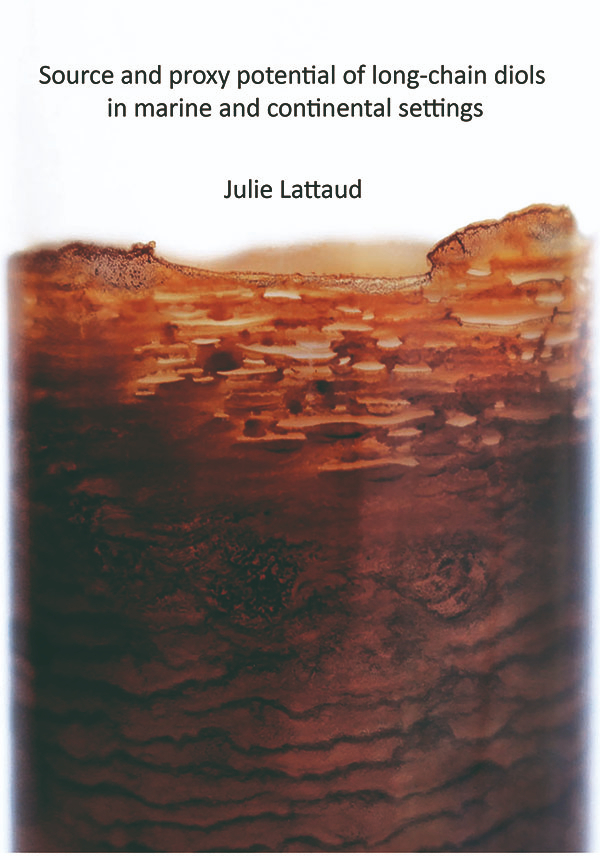Reconstructies paleoklimaat nu nog nauwkeuriger
Kennis over het klimaat in het verre verleden is van groot belang om toekomstige klimaatveranderingen beter te kunnen voorspellen. Omdat instrumentele meetgegevens slechts over beperkte periodes beschikbaar zijn, worden geologische archieven zoals sedimenten bestudeerd. Hierin zitten organische moleculen die aardwetenschappers kunnen gebruiken om de omgevingsfactoren en het klimaat in het verleden te reconstrueren. Zo’n molecuul heet ook wel een proxy.
Lattaud legt in haar proefschrift de nadruk op één klasse van proxy’s: de langeketendiolen. Dit zijn organische verbindingen die niet vergaan en kunnen worden aangetroffen in sedimenten met een ouderdom tot 65 miljoen jaar.
Langeketendiolen kunnen worden gebruikt om de zeewatertemperatuur te reconstrueren, hoewel de metingen soms wordt verstoord door langeketendiolen die afkomstig zijn uit rivieren. Deze laatste diolen kunnen wel gebruikt worden om de invloed van rivieren in kustgebieden in het verleden te bepalen. In meren en langzaam stromende delen van rivieren is de productie van langeketendiolen door eencellige algen seizoensafhankelijk.
Met de resultaten uit haar proefschrift maakt Lattaud het mogelijk om een nieuwe, op diolen gebaseerde proxy’s te ontwikkelen waarmee de invloed van rivieren kan worden bepaald. Door deze proxy te combineren met andere proxy’s kunnen wetenschappers bodemerosieprocessen en de productie en transport van organisch materiaal in rivieren nauwkeuriger onderzoeken.
Naar aanleiding van dit onderzoek werden al nieuwe reconstructies gemaakt, zowel in tropische als in poolgebieden. Dit maakt een beter inzicht in klimaatveranderingen in het verleden mogelijk.

Sources and proxy potential of long-chain diols in marine and continental settings
Understanding past climate variability is of key importance to better predict future climatic evolution. As instrumental records are limited in time, geological archives such as sedimentary records are used. So-called proxies, obtained by the analyses of these sedimentary records, are used to reconstruct past environmental settings and climate change. One type of proxies are biomarkers and this thesis focus on one class and their potential as proxy: the long-chain diols. These compounds are resistant to degradation and can be found in sediments up to 65 million years old.
These long-chain diols are useful to reconstruct sea temperature, though this reconstruction is hampered by riverine long-chain diols which bias the original signal. However, the riverine diols can be used to trace past riverine input in coastal margins. In lakes and rivers, diols are produced seasonally by unicellular algae in low-flow areas of river systems. The results described in this thesis allowed for the development of a new diol-based proxy for river input, which, in combination with other proxies, enables a much better understanding of riverine production and transport, and of soil erosion processes. New paleo-reconstructions in both tropical and polar regions have been generated, enabling improved reconstructions of past climatic changes.

Arctic research thanks to NWO Rubicon Grant
In april 2019 Julie Lattaud has been awarded a NWO Rubicon Grant. The Rubicon programma gives young, highly promising researchers the opportunity to gain international research experience. Lattaud will be investigating the Changes in the carbon cycle and the Arctic air in Switzerland at the ETH Zurich, Department of Earth Sciences for 24 months. "I will be able to study the effect of global warming and melting of permafrost in the Arctic during the last 1000 years. The Arctic is the region where the most warming has been predicted for 2100. During my research I will measure the age of specific lipids to detect the mobilization of old carbon and to understand how global warming influences the aquatic lacustrine ecosystems" says Lattaud who is looking forward to this new challenge.
